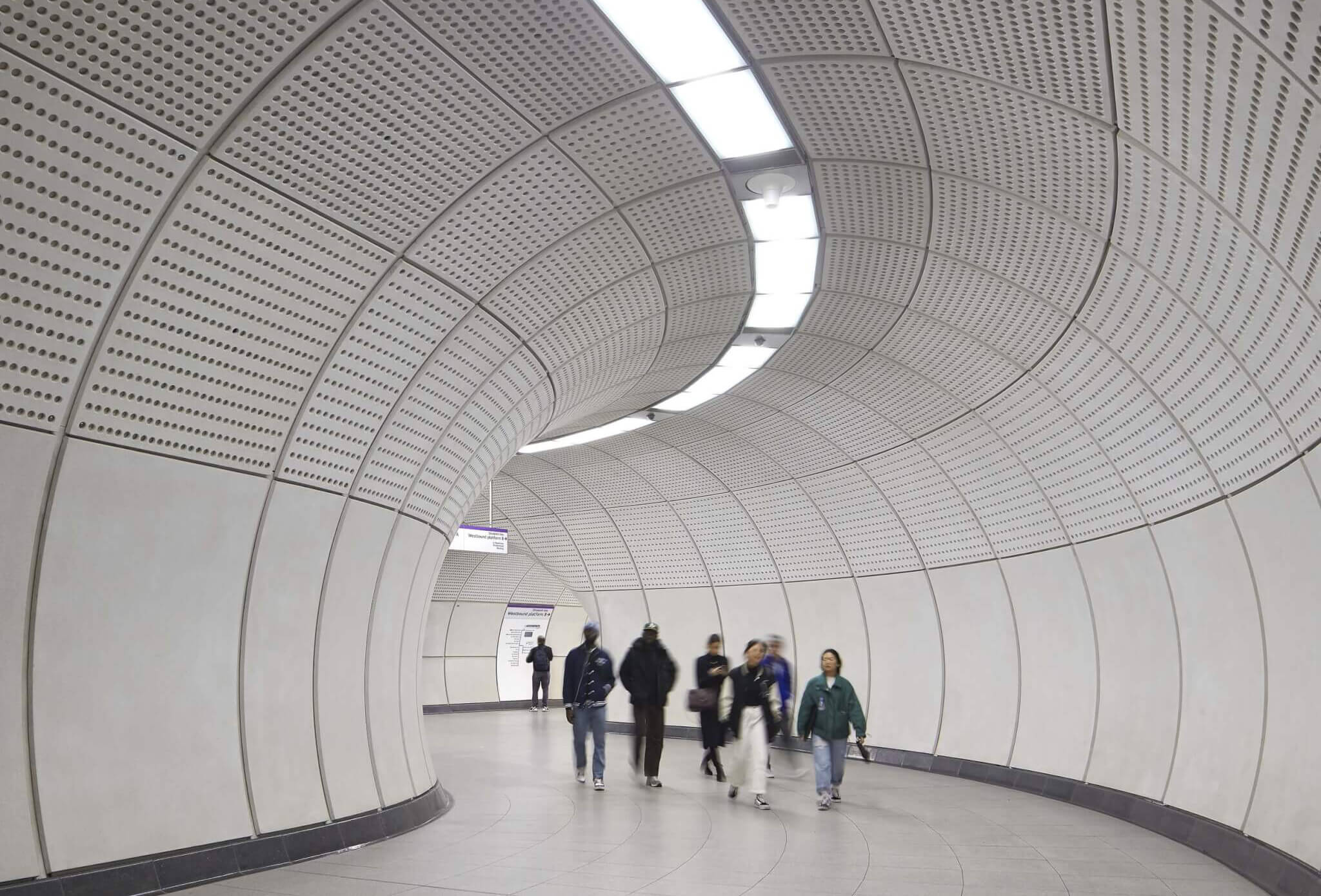London’s newest train line named after the late Queen Elizabeth is the 2024 Stirling Prize winner, RIBA announced yesterday. The Elizabeth Line, designed by Grimshaw Architects, connects Reading in the west to Sheffield in the east with 62 total miles of track; it was made possible thanks to new cross running service in London’s city center.
Elizabeth Line’s construction necessitated 26 miles of new tunnels dotted by 10 new stations. Both the new tunnels and stations were designed by Grimshaw Architects, but that office certainly wasn’t alone in the $25 billion endeavor.
Wayfinding and signage was led by Maynard Design, lighting design by Equation, and AtkinsRéalis provided engineering services. All members of the design team who contributed to Elizabeth Line’s platform architecture, passenger tunnels, escalators, station concourses, signage, furniture, fittings, finishes and supporting technology were recognized by the Stirling Prize committee.

The Elizabeth Line beat out five other design projects in the U.K. for the Stirling Prize. These projects included,the regeneration of Kings Cross, council homes in Hackney, National Portrait Gallery’s renovation, council housing in Sheffield that were converted to market-rate flats, and a dairy farm turned vacation spot.
RIBA president and jury chair Muyiwa Oki said in a statement, “The Elizabeth Line is a triumph in architect-led collaboration, offering a flawless, efficient, beautifully choreographed solution to inner-city transport.” He added that it is “an uncluttered canvas that incorporates a slick suite of architectural components to create a consistent, line-wide identity—through which thousands of daily passengers navigate with ease.”
This year’s Stirling Prize winner stands out because, in recent years, RIBA has primarily prized buildings for its annual award, not tunnels. (Last year the John Morden Centre by Mæ, a brick and timber retirement community just south of London won.) And Elizabeth Line is an infrastructure project rather than a building.
However, the Elizabeth Line is not the first transportation project to be awarded the Stirling Prize. In 2006, Richard Rogers Partnership won for its work on Madrid’s Barajas airport and, in 2002, Wilkinson Eyre was recognized for Millennium Bridge.
The recent decision to reward engineering and infrastructure prowess over architectural spectacle is in line with the Sir Joane Soane Medal’s latest inductee. Hanif Kara, an engineer, not an architect, won that prestigious prize, as reported by AN.

The project impressed jurors because of the important infrastructure and transport services it provides as London takes strides to achieve carbon neutrality. Moving people from cars onto trains is an essential part of this equation, something Elizabeth Line augments.
Its finishes, lighting, and ubiquity evoke Harry Weese’s design for the Metro in Washington, D.C. The ceilings curve in and the walls were wrapped in white tiles with perforated holes. On train platforms, sleek transparent partitions separate arriving trains from the platforms.

“The Elizabeth Line is a piece of infrastructure that has been transformative, not only for London’s transport network but also for many people’s lives, highlighting the role design plays in elevating our every day,” said Neill McClements, a partner at Grimshaw, on behalf of Grimshaw, Atkins Realis, Equation and Maynard.
“It is also a recognition of the challenges that our profession faces today—the responsibility we have to rapidly respond to the climate emergency, decarbonise our cities and prioritise social and economic equity,” McClements added. “We know this is only achievable through collaboration and the Stirling Prize recognises all of the design and construction teams that have come together to make the project the success that it is.”

